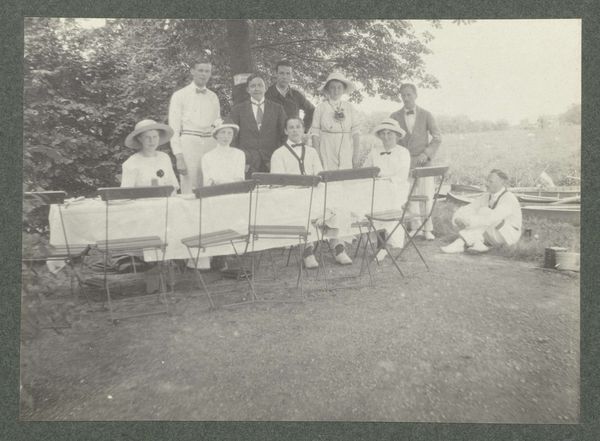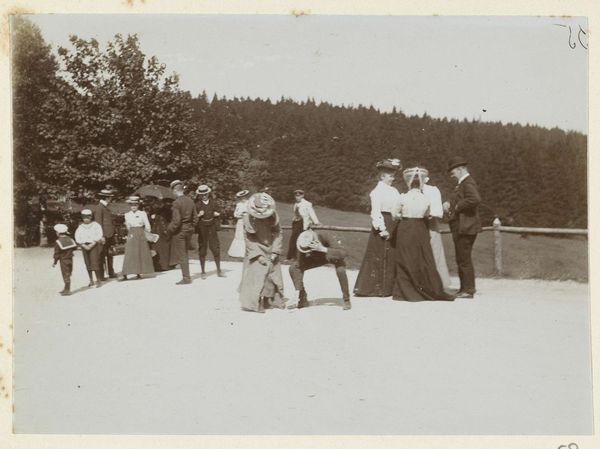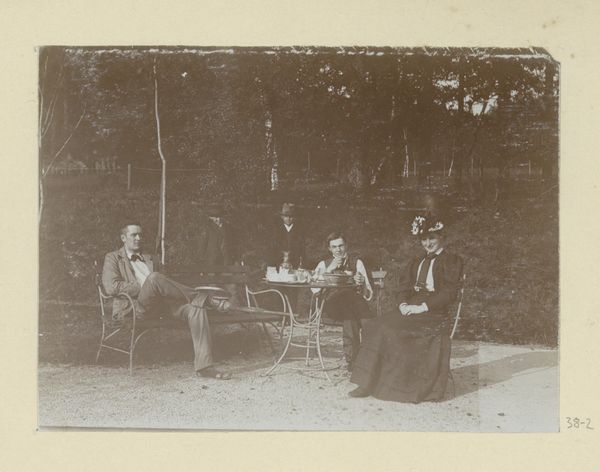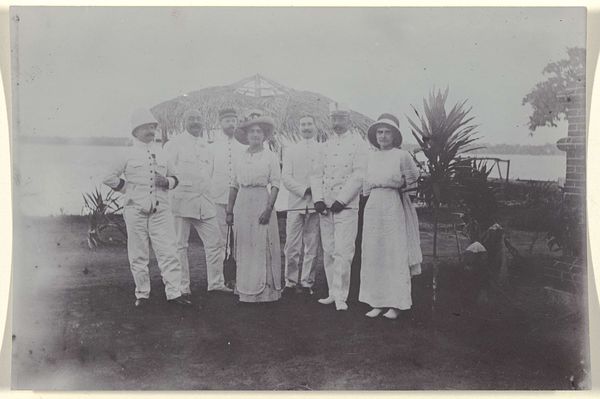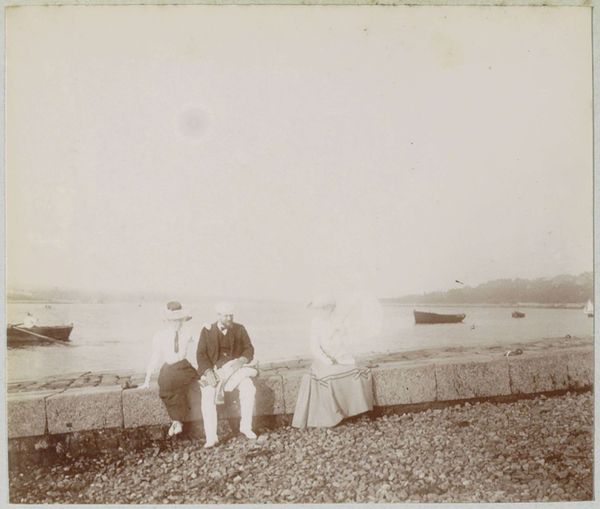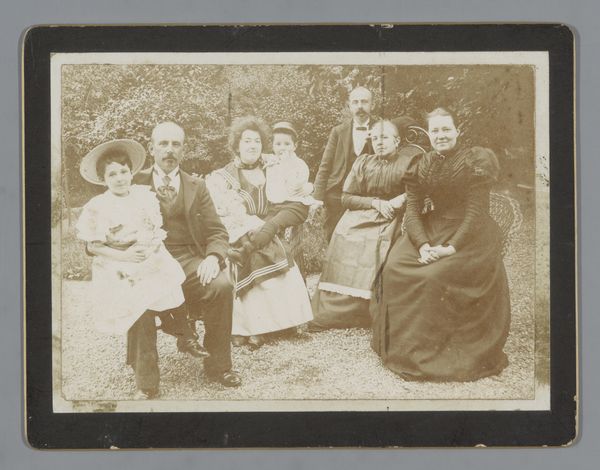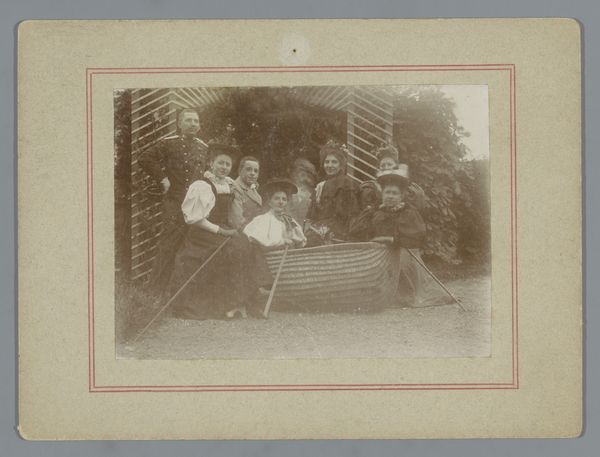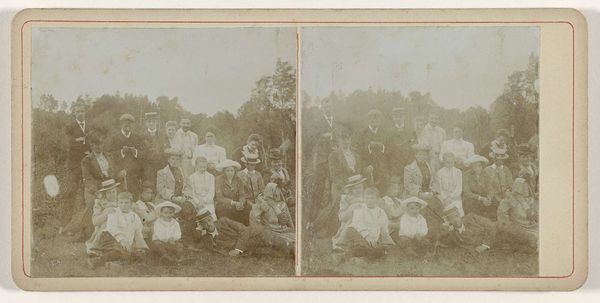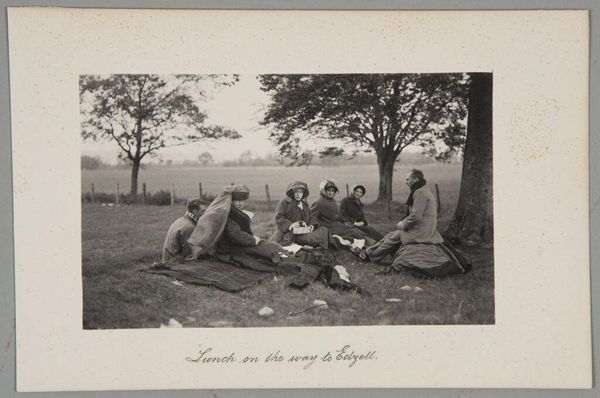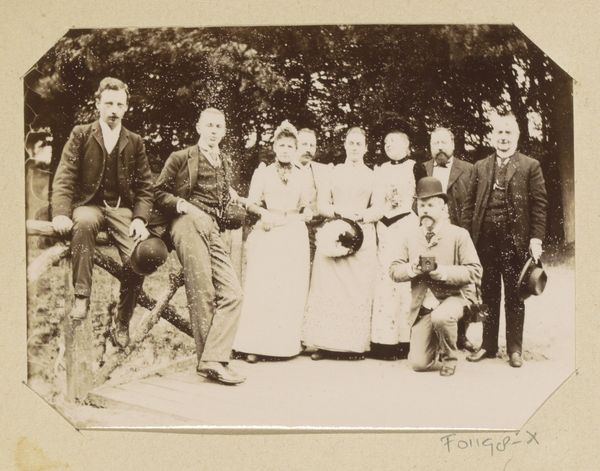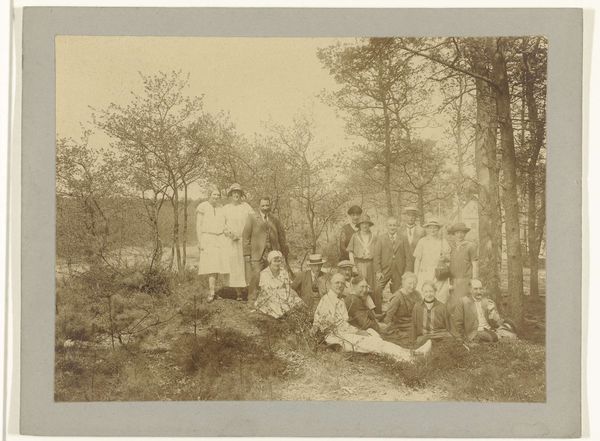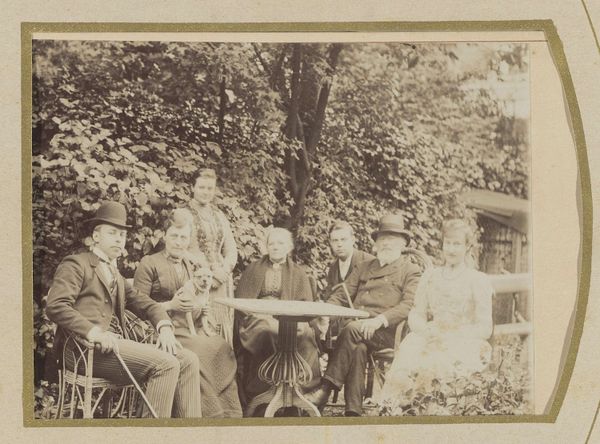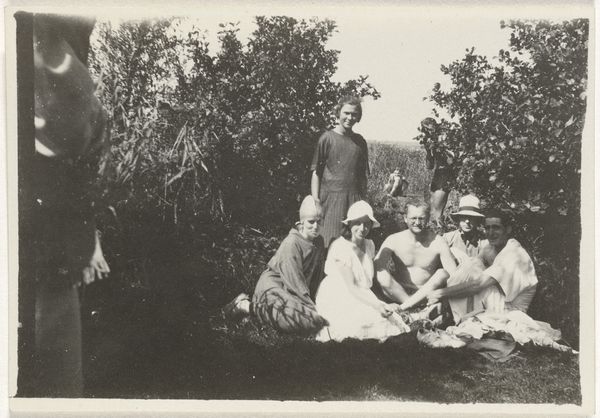
Dimensions: height 79 mm, width 109 mm, height 242 mm, width 333 mm
Copyright: Rijks Museum: Open Domain
Curator: Here we have "Picknickende mensen op een grasveld nabij het water," a gelatin-silver print by Frits Freerks Fontein Fz., circa 1903. Editor: It has the unmistakable feel of archive photography—stark, almost documentary—but there's something also quite painterly about the scene. Curator: Indeed. Fontein was active during the height of pictorialism, a movement where photographers employed printing techniques to mimic the aesthetic qualities of paintings, but looking closer we see this gelatin-silver print, in its materiality and tone, stands apart in many ways. The texture of the grass, the slight imperfections, remind us of its industrial means of production. Editor: Precisely! And it's this contrast that grabs me. While the subject matter – a bourgeois picnic – seems idyllic, the materiality speaks to a larger story: how leisure time was experienced and represented during this time and by whom. This speaks directly to how such scenes are documented through processes and technologies then available. Curator: Note how the composition arranges the figures, framing them against the water and sailboats—it emphasizes both depth and flatness, pushing and pulling the pictorial plane to offer dynamism and suggest a narrative between people at leisure and their vessels of transport. Editor: It prompts a critical reflection: Who are these people, and what kind of labor and access granted them this afternoon? Also, the steamships juxtapose with sailboats offering stark class connotations and questions of resource control, or, simply put, how society then, and now, decides access to shared spaces. Curator: An excellent point. The stark rendering does seem to lend itself to this critical reading, complicating any immediate impression of lightheartedness and posing those questions you aptly observe. Editor: So much is tied to our relationship to landscape, what and who we perceive as belonging within a shot of nature, don't you agree? Fontein is reminding us to reconsider photography as a site where meaning is produced, exchanged, and consumed. Curator: Well, this conversation has certainly refined my initial formal interpretation; a fresh set of social factors to consider indeed, beyond mere aesthetic appreciation. Editor: It seems that considering how and what this image shows can unlock other questions and approaches for viewing works across genres and eras, even today.
Comments
No comments
Be the first to comment and join the conversation on the ultimate creative platform.
